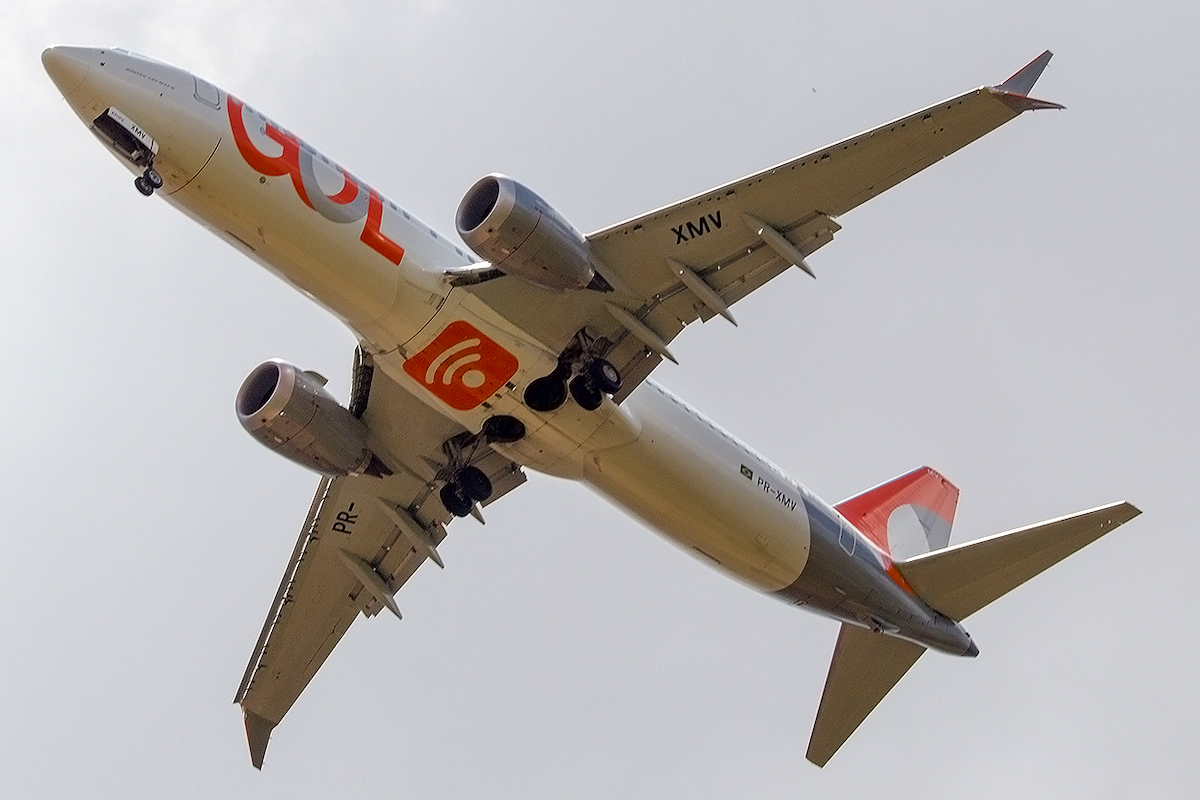Brazil's Gol For One Is Happy With Lack of Capacity in Airline Industry

Photo Credit: Flickr / Alexandro Dias
Brazil's second largest airline, Gol, will grow a little less this year than it planned thanks to delays receiving new aircraft from Boeing. But while that may not sound good, management is perfectly fine with the situation.
The São Paulo-based carrier has shaved five percentage points of capacity growth from its forecast for 2023, to up 15-20 percent year-over-year. The reduction is due to delays receiving new 737 Max aircraft, Gol CEO Celso Ferrer said during the carrier's fourth-quarter earnings call Wednesday.
At the same time, travel demand is strong with bookings "performing very well" since the beginning of the year, Ferrer said. And while corporate travel volumes are down 25-30 percent from 2019 levels, revenues in the lucrative segment have fully recovered.
And what happens when demand outstrips supply of air travel? Travelers pay more, and higher revenues are critical for Gol especially as the airline faces the double expense whammy of high oil prices and a strong U.S. dollar; many major airline expenses, including aircraft leases and fuel costs, are paid in dollars.
"We are ramping up the capacity in the domestic market, very cautiously to maintain the unit revenues that became very crucial for us," Ferrer said.
Gol's yields were up 45 percent from 2019 levels — or 25 percent year-over-year — in the fourth quarter. That increase was driven by robust travel demand, particularly among leisure and visiting friends and relatives traffic, while overall airline capacity in Brazil was down about 1 percent from three years earlier, Diio by Cirium schedule data show.
Hence the delay of new 737 Maxes is not a top concern for Gol management this year. The airline ended 2022 with 38 of the aircraft; six fewer than the 44 planes it had expected. This year, Gol anticipates adding 15 more Maxes for 53 by December. The 2023 number, however, is still three fewer aircraft than Gol had forecast for the year as recently as October.
Gol plans to fully restore its domestic Brazil capacity to pre-pandemic levels, and will also grow international capacity, Ferrer said. Much of the international growth, including new routes to Miami and Orlando, occurred late last year but will show as sequential capacity increases throughout 2023. Gol is holding off returning to near-international markets Lima and Santiago, Chile — strongholds for competitor Latam — until the markets become "healthier," Ferrer added.
Speaking of health, Gol — like Azul — has avoided any potential defaults regarding lease obligations. The airline addressed its aircraft lease obligations through a series of transactions including an issue of $200 million senior secured notes due in 2026 (in the fourth quarter), and a $1.4 billion senior secured note due in 2028 (done in last year's March quarter), Chief Financial Officer Richard Lark said. These “liability management and refinancing” transactions allowed it to stretch out its pandemic-era obligations, and improve Gol's positive cashflow forecast this year.
Azul, Brazil's third largest airline, reached deals earlier in March with the majority of its lessors that lowers its aircraft lease payments to market levels, and provides the counterparties with debt and equity worth the balance of their claims. The agreements will allow Azul to avoid a potential bankruptcy filing, and turn an estimated 3 billion Brazilian reais ($586 million) in negative cashflow this year to breakeven.
Both Azul and Gol, which operate almost entirely in the Brazilian domestic market, have been hit hard by oil and the strong U.S. dollar. At Gol, Lark said fuel expenses increased 44 percent year-over-year in the fourth quarter.
Gol executives had little to say on the airline's planned merger with Avianca in Colombia to form the new airline holding company, Abra. Avianca will be under the new ownership structure by April and approvals are underway to move Gol to Abra as well, Lark said. The two airlines plan to operate as separate airlines and brands — much like the carriers in International Airlines Group in Europe — while taking advantage of synergies at the group level. They did not comment on Avianca's proposed merger with bankrupt Viva Air in Colombia, which has come under scrutiny for potential antitrust violations.
And the numbers: Gol reported a 631 million Brazilian reais operating profit in the fourth quarter, which translated to a strong 14.9 percent operating margin, adjusted for special items. Its net profit was 231 million Brazilian reais. Revenues came in at 4.7 billion Brazilian reais, or 24 percent higher than in the fourth quarter of 2019. Unit costs excluding fuel were up nearly 42 percent year-over-three-years.
Gol anticipates a respectable 12 percent operating margin in the first quarter, peak season for travel in Brazil. It plans to increase capacity 11-13 percent compared to 2022.
